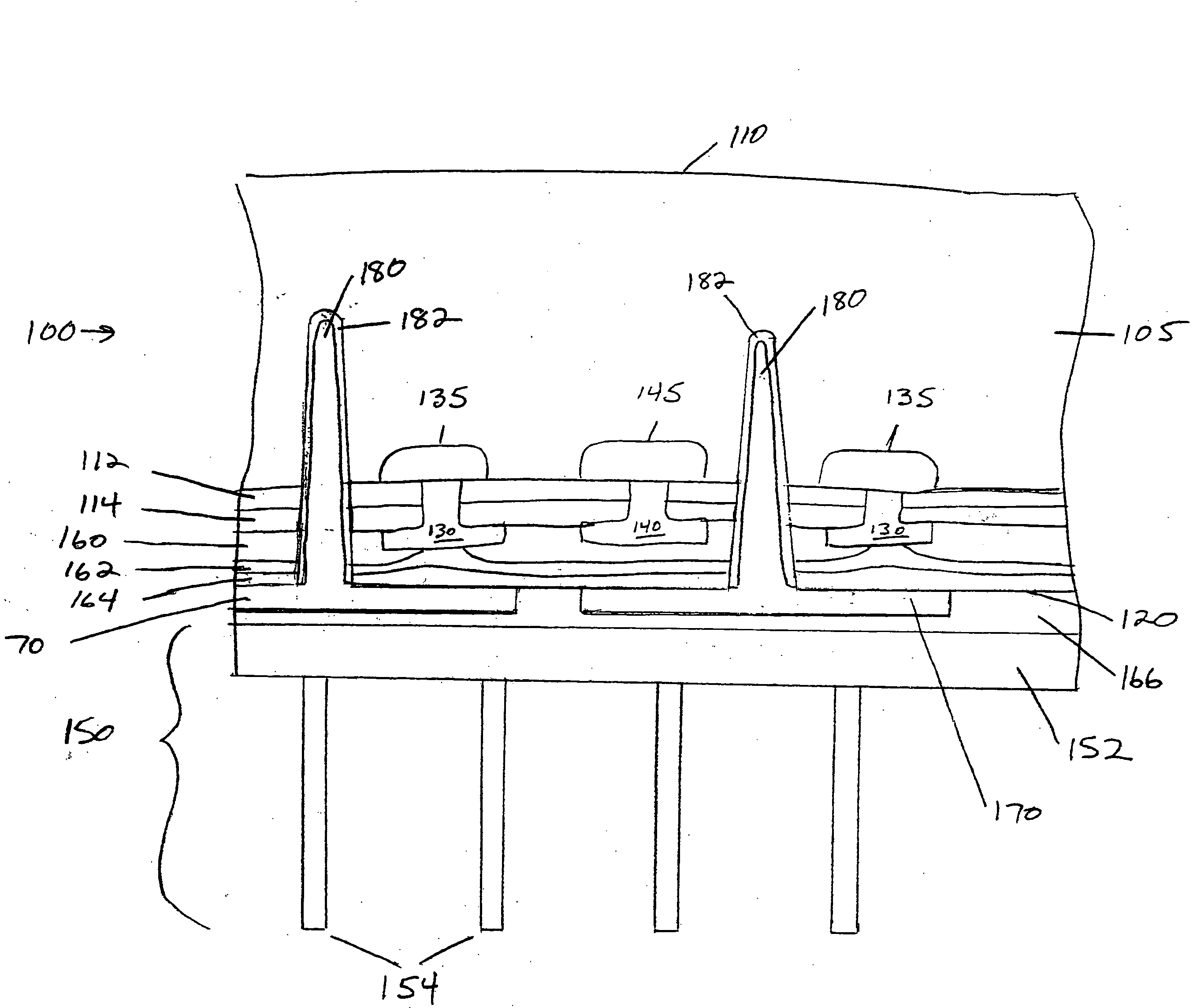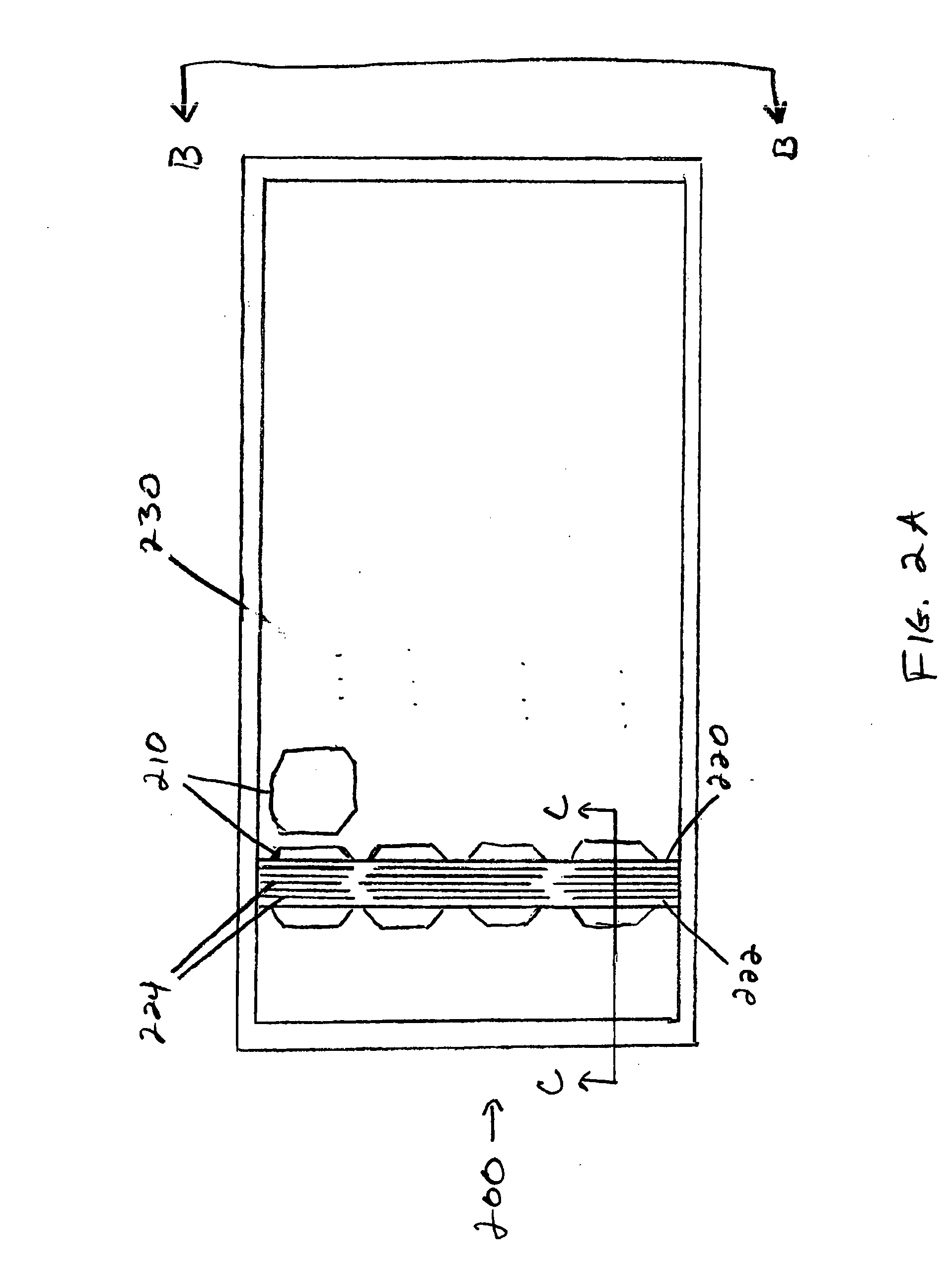Photovoltaic cells, modules and methods of making same
- Summary
- Abstract
- Description
- Claims
- Application Information
AI Technical Summary
Benefits of technology
Problems solved by technology
Method used
Image
Examples
Embodiment Construction
[0020]A photovoltaic (“PV”) cell may be formed of amorphous silicon, polycrystalline silicon, single-crystal silicon, III-V semiconductors or other semiconductors or electroceramics, for instance. Such PV cells may therefore have a p-i-n structure, a p-n junction, or a heterojunction. Cells may have incorporated into them heat-conducting channels that aid in transferring heat into or out of the bulk material around the heat-conducting channels.
[0021]A portion of a PV cell 100 is depicted in FIG. 1 as one example of a PV cell formed from single-crystal silicon. The photovoltaic cell 100 is formed from e.g. an n-type silicon wafer 105 and has a light-receiving surface 110 and a surface 120 opposite the light-receiving surface. Cell 100 has multiple pairs of p-n regions formed at the same surface 120 and that generate electricity in response to light irradiating the light-receiving surface 110.
[0022]Cell 100 as illustrated in FIG. 1 has a first electrode 130 connected to a p-junction 1...
PUM
 Login to View More
Login to View More Abstract
Description
Claims
Application Information
 Login to View More
Login to View More - R&D
- Intellectual Property
- Life Sciences
- Materials
- Tech Scout
- Unparalleled Data Quality
- Higher Quality Content
- 60% Fewer Hallucinations
Browse by: Latest US Patents, China's latest patents, Technical Efficacy Thesaurus, Application Domain, Technology Topic, Popular Technical Reports.
© 2025 PatSnap. All rights reserved.Legal|Privacy policy|Modern Slavery Act Transparency Statement|Sitemap|About US| Contact US: help@patsnap.com



